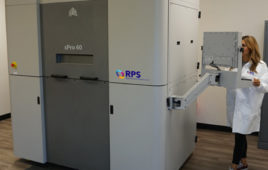The current plight of Boeing and the airlines that fly the 787 aircraft highlights not only the safety risks, but also the commercial risks of lithium battery-powered products and devices.
Lithium batteries are marvelous inventions — they are lightweight, relatively inexpensive and can pack a lot of power with a shelf life far superior to other types of battery technology. These days, rechargeable lithium ion batteries, and primary non-rechargeable lithium batteries are everywhere. And unfortunately, they are also considered “Dangerous Goods” (or “HazMat,” a term used in the U.S.).
It should be obvious to any company executive (and especially a corporate risk manager) who picks up a newspaper that lithium batteries are all over the news. Suspected lithium battery related incidents — like the 787 grounding, a couple of suspected cargo aircraft fires, the recent explosion and injury from an exploding “electronic cigarette” to the numerous fires started by lithium powered consumer products — should give any CEO or corporate risk officer something to think about.
Not only is there a risk from civil litigation, but also huge potential for government law enforcement actions against a company — perhaps yours — that does not fully understand the incredibly complex rules for shipping lithium batteries by common carrier or airline.
Last year a Federal Aviation Administration (FAA) enforcement action against a plastics manufacturer resulted in a $75,000 proposed penalty for a plastic connector they built to house a simple lithium coin-cell (this was designed to provide backup power to a fuel emissions monitoring system for a commercial truck diesel engine). Their customer shipped them the cells and asked them to include one inside each device. Each of these coin-cells was installed in the connector and each connector was individually boxed. Nothing was damaged and there was no incident — except that the box was not properly marked. The material safety data sheets (MSDS) that included information about the lithium cell was misleading, in that it said these small (certified) cells, containing 0.27 grams of lithium were “not restricted” by any mode of transport.
That was not true — this mistake is made all the time and it’s a common misconception that “small” lithium batteries are not restricted. Nothing could be further from the truth. Even the International Air Transport Association (IATA) chose to remove the word “not restricted” from any references regarding lithium batteries.
After a yearlong legal battle, the plastics company discovered that there are a lot of people who don’t understand the lithium battery shipping regulations. There are more than 37 different possible ways to ship these batteries and cells depending on the power of the battery/cell, whether it’s shipped alone, packed with equipment or actually contained in a piece of equipment, and there are different rules for each mode of transport (air, highway, ocean).
So what is a manufacturer or distributor supposed to do to ensure compliance and properly ship these lithium batteries and the devices they power? There are a few key points that need to be considered:
- With few exceptions, all lithium cells must be tested according to strict UN standards which provide specific criteria. These tests are designed (among other things) to simulate real world conditions, including conditions normally incident to transportation.
- Many companies purchase tested cells — i.e. lithium ion cells from suppliers in China — and then construct a battery out of these approved cells. These batteries or subsequent battery packs must then be tested again.
- The penalties for failing to properly package or properly offer for transport a lithium battery can carry fines of up to $55,000 dollars per package per day. This is for accidental violation of the rules where there is no intent to “wilfully” violate the requirements. “Wilful” violations can involve criminal prosecution and penaltites — especially if there is death, injury or property damage that is a result of this intentional disregard of the regulations.
- Many SDS are just plain wrong when it comes to lithium battery shipping information. Any SDS over 3 years old should be suspect as the rules have been in constant flux over the last 8 years or so. Any SDS/MSDS that references the term “excepted by Special Provision A45” is horribly out of date.
- Could you ever see your company in a position where your customers might have to return a lithium battery or lithium battery powered device to you as part of your returns or reverse logistics process? Be careful! In order to ship some of these batteries, your customer (if they are a business), may have to train and certify their employees before they can legally offer a shipment of these products to a commercial carrier (i.e. an LTL trucker or freight company), and they have to comply with the shipping regulations.
- Beware of helpful employees or colleagues bearing mis-information about lithium battery shipping. The most prevalent piece of bad advice goes something like this: “Oh, don’t worry, it’s an ‘excepted’ lithium battery because it’s under 100 Wh or 2 grams — it’s not restricted.” That piece of bad information is pervasive and even many of the carriers don’t understand the nuances of the rules. Your response should be: there is never a circumstance (ever) where a lithium battery is non-restricted. Period.
- The operative question to ask is: Which regulations do apply under our circumstances and to what extent does it restrict my ability to ship our product with the least hassle, least cost, and the highest level of safety.
If your company transports, ships, or causes to be shipped — any lithium battery powered product, you need to have a set of policies and procedures in place that will minimize your liability. These steps will help you achieve your goal of safe and legally compliant lithium battery shipping:
- Only allow trained personnel to handle and ship these products.
- Create a procedures manual that includes instructions on how to ship your products.
- If you ship lithium batteries by air, be sure to revisit your shipping procedures as there were SUBSTANTIAL changes in 2013 for shipping “excepted” batteries and cells.
- Have a knowledgeable resource available to assist your company. One free source of information is the US Department of Transportation. They have a HazMat help line at 1-800- 467-4922 ext 1.
- If you don’t want to rely only on the government regulator for free you can contact a private consulting and penalty mitigation company such as our company, Transportation Development Group LLC (www.dgtraining.com).
The most important piece of advice is to not accept the status quo. Just because you’ve never had a visit from a DOT inspector or FAA agent (if you’re shipping by air) doesn’t mean everything is in compliance. Be proactive and have a trained person audit your shipping operations and policies. Hopefully this will prevent any enforcement actions, or at the very least show a proactive stance with regard to lithium battery compliance. Be sure to have documentation to back it up as this will help reduce the amount of penalty against you should an investigation be launched.
James E. Powell is president and founder of Transportation Development Group LLC (TDG) a dangerous goods (hazardous materials) training company and consultancy based in Seattle, Wash. TDG specializes in hazardous materials shipping training by air, ocean and highway. TDG is a global leader in IATA, IMDG, and DOT dangerous goods online training. Over the last 20 years, TDG has trained thousands of people.
For more information, visit www.dgtraining.com or email Josey Dentzer, Lithium Battery Product Manager, Transportation Development Group LLC, [email protected].
Filed Under: Rapid prototyping




